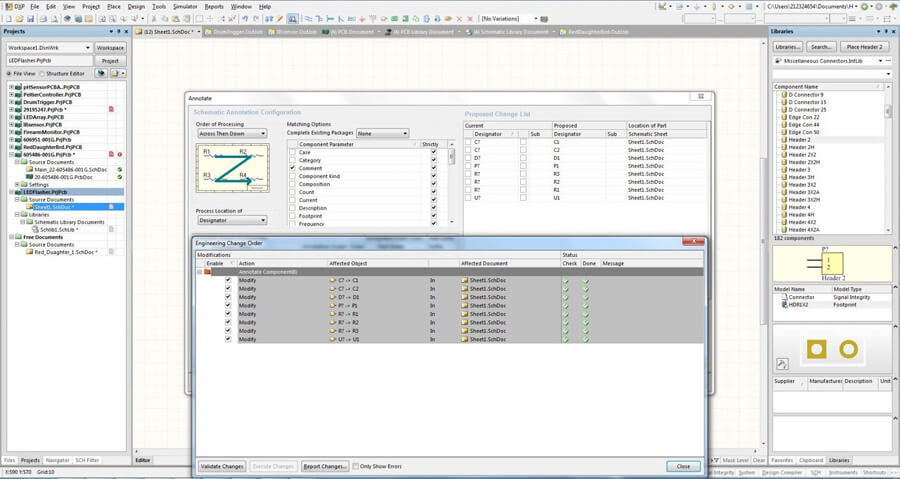

These components, along with their part choices, are stored in a managed content server. Under this modeling paradigm, a Part Choices list is used to map the design component to one or more Manufacturer Parts, listed in the managed content server's local Part Catalog, which in turn can be mapped to one or more Vendor parts, allowing the designer to state up-front, what real parts can be used for any given design component used in a design. A truly 'Unified Component' model that not only represents the component in the different design domains (Schematic Capture, PCB Layout, Simulation) but also facilitates choices of the desired physical components - real-world manufactured parts - at design-time, offering a significant improvement in terms of procurement cost and time, when manufacturing the assembled product. This component model effectively maps the concept of a design component - in the traditional electronics design arena - to the component as seen by the rest of the organization in the bigger 'product arena'. This evolved object model is known as the Unified Component Model. However, to seamlessly fit the process of electronics design into the encapsulating product development process as a whole, this model needs to evolve - extending to cover other aspects including other design processes (in particular MCAD and Industrial Design), as well as business processes (such as procurement and manufacturing) that intersect with the product development process.

This applies to all objects used in the design process, from simple off the shelf components like resistors, through to complete PCB assemblies, enclosures and even the final product.Īltium Designer, with its unified design approach, has traditionally used a component model that extends across all aspects of the electronics design process. Not just model them, but model them to a very high level of quality. One of the fundamental principles to Altium's way of approaching the design of electronics, is just how important it is to model the objects used in the design process. Migrating Existing Unmanaged Components.Preventing Deletion of a Component Item if a Revision in Use.Effecting Batch Component Changes - the Item manager.Browsing and Placing Managed Components.Making Your Managed Components Accessible.Part Choices - Accessing the Supply Chain.


 0 kommentar(er)
0 kommentar(er)
